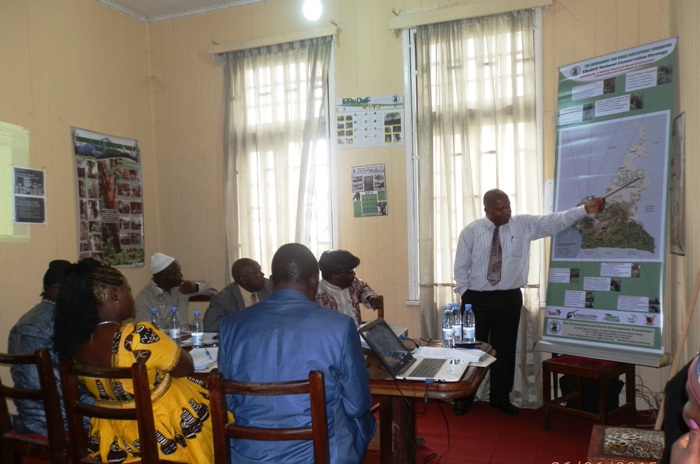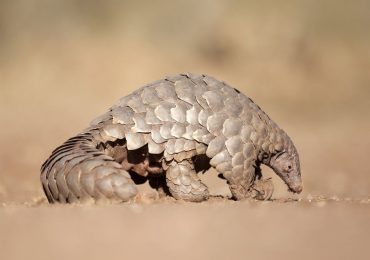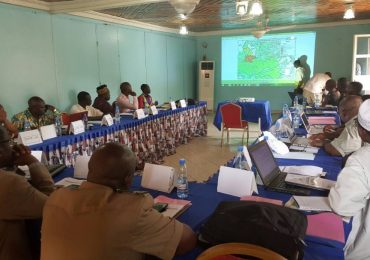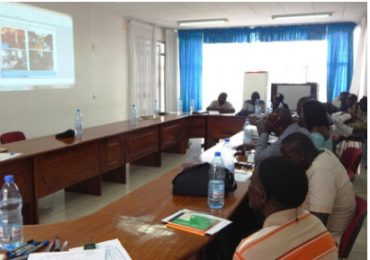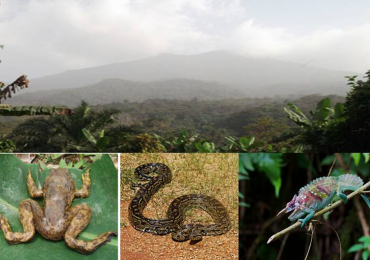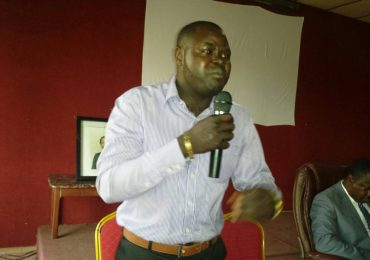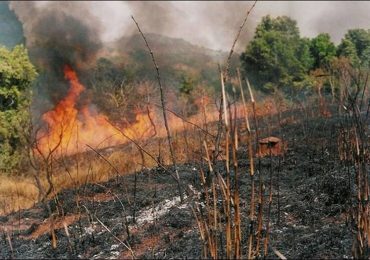A proverb adored by ancient Maya in the tropical jungles of Central America ran thus, “Who cuts the trees as he pleases cuts short his own life.” The Mayans were no farther from the truth than what modern man is experiencing as a result of his destruction of large expanses of forest for various reasons.
By Azore Opio
According to World Bank estimates, some 1.2 billion people of the world’s total population depend on forests, deriving 90% of their livelihoods from forest resources. They obtain food, fuel, feed for livestock, medicine and shelter from the forests, besides employment. Forests also absorb carbon dioxide emitted into the atmosphere, thereby regulating climate. Beyond these, forests provide vital services to the ecosystems such as protection of watersheds, water flow regulation, rainfall generation and nutrient cycling.
Forests not only provide services to benefit just humans, they are home to plants, animals, birds and insects, all members of a larger ecosystem that depend on one another for survival. Forests, therefore, could be likened to a vast domicile accommodating different but inter-related tenants. So whether at local levels or global scales, ecosystems obey no national border rules or regulations; all the Earth’s people, animals, plants, birds, insects and the landscape are affected in one way or the other by what happens in any area in the ecosystem, however remote it may be. It is, therefore, imperative for humans to pursue the sustainable exploitation of the ecosystem for the continued gratification from the resources found there-in into the future.
About 30%, equivalent to 4 billion hectares of the Earth’s land surface area, are covered by forest. High as this figure seems to be, the world is losing its forest cover at an alarming rate. Between 1990 and 2000, the world lost over 8 million hectares per year. In the following years up to 2010, more than 6 million hectares of forest disappeared per year. The disappearance of these vast amounts of forests consequently affects not only biodiversity, resources and habitats, but deforestation and forest degradation release carbon dioxide into the atmosphere. Carbon dioxide traps heat and so it is one of the most potent greenhouse gases and the principal fuels of global warming.
Melting Hot Spot
The Maya adage could not be more aptly applied to one of the world’s hottest biodiversity spots, Cameroon. According to FAO and IUCN, Cameroon is home to over 9,000 species of plant with 160 endemics, 320 species of mammals (14 endemics), 920 species of birds (8 endemics and 150 migratory species), 542 species of fresh and brackish water fish, 260 species of amphibians (63 endemics), 297 species of reptiles and 1500 species of butterflies. The country also harbours a high percentage of threatened or endangered species including 18 mammals, 16 birds and 5 reptiles, surveys carried out by WRI, Alpert, WCMC 1994, and Birdlife International indicate. It follows that Cameroon is the most biologically rich country on the continent. The country’s protected areas provide shelter to around 90% of the country’s animal species, 95% of plant species, close to 65% of habitats and 80% of the country’s ecosystems, says a Ministry of Forestry and Wildlife report. Despite this huge wealth in biodiversity, the triangular nation in the armpit of the central African tropical rainforest loses its 20 million hectares of forest to chain saws, day by day. The UN agency, Food and Agricultural Organisation (FAO) estimates that the annual average deforestation rate in Cameroon is second only to the Democratic Republic of Congo. A fact that should worry Cameroonians into urgent, positive action.

According to a 1998 WRI, UNEP, UNDP and World Bank report, between 1980 and 1995 Cameroon lost 2 million hectares of forest, approximately 0.6%. A decade after, the rate reached 0.9%, rising to 1% between 2000 and 2005, according to FAO. Then between 1990 and 2010, Cameroon reportedly lost 4,400,000 ha (18.1%) of forest cover at an average rate of 220,000 ha (0.90%) annually. These figures show clearly that the loss of forest is also loss of habitats to animals, birds, insects and other plants, some of which are already endangered due to other insensitive human activities. With commercial loggers penetrating the forests deeper against insufficient law enforcement and the blight of corruption, the local population overcoming the capacity of available land (farmers clearing forest for plots, cattle keepers burning vegetation for fresh pasture) Cameroon’s forests are being consumed faster than they can grow. It is only natural then, that landscape degradation, deforestation, and unsustainable exploitation of natural resources are cumulatively responsible for the disappearances of certain vital species of animals and plants. Therefore, tackling the destruction of forests is central to any determined effort to protect endangered animal and plant species as well as restore fragile ecosystems, while combating rural poverty, and contributing towards mitigating climate change.
Enter ERuDeF
In 1999, having identified degraded landscapes in the Southwest and West Regions and some endangered wildlife species, ERuDeF (the Environment and Rural Foundation) laid the foundations for an environmental conservation strategy with measures targeting local communities, government agencies and international partners. Since then, within its sphere of activity, ERuDeF has played her role by simultaneously conserving biodiversity and restoring vital ecosystem services whilst also alleviating rural poverty.
Throughout its 16 years of existence, ERuDeF has been increasing attention she pays to the roles of individual stakeholders at different stages in efforts to conserve endangered wildlife species and protect fragile ecosystems in Cameroon. In 2014, the organization achieved a key milestone in her efforts to conserve endangered wildlife species. Through her relentless work in the Lebialem Highlands Conservation Complex in Lebialem Division, Southwest Region, the government of Cameroon endorsed the creation of the Tofala Hill Wildlife Sanctuary – the first-ever sanctuary whose creation was influenced by a local NGO.
ERuDeF’s passion about not only the protection of endangered wildlife species and the conservation of fragile ecosystems, but human life, permeates every aspect of its field and educational activities. The organization has developed programmes tailored to fulfil the basic needs and honour the dignity of the lives of humans living adjacent to protected areas. Her Education for Sustainable Development and Livelihoods and Economic Development components of the organization, add another dimension to ERuDeF’s conservation interventions.
“We try to go all-out to trigger sustainable livelihoods by giving support to communities in the form of micro-credit development, pig and beehive donations, sensitisation on income-generating activities – extraction of NTFPs and other petty businesses, local soap production, training and start-up financial support – says Ignatius Njom.
ERuDeF also facilitated the first-ever signing of the Mutual Agreement Terms under the Access Benefit Sharing (ABS) initiative project between a French firm and the Bamumbu fondom in Lebialem Division.
Through the Education for Sustainable Development component, ERuDeF reaches out to schools in the rural areas with scholarships, learning materials, as well as hygiene and sanitation infrastructure.
Industries using faster growing trees would be of benefit to both people and the forest. And this is where ERuDeF coming in is useful. Under its Threatened Trees Program, and Agro-forestry (Forest Garden System), farmers have been learning, and most have already begun reaping the fruits of their labour by applying organic techniques to fertilize soils and increase crop yields.
ERuDeF has also been putting back trees in the wild to restore degraded lands and forest areas via her Mt. Cameroon Threatened Trees Program.
Studies of this important eco-system called Cameroon are increasing along with ERuDeF’s sentiment mounting to preserve it. The IVP (International Voluntary Programme) is providing professional environmental training and tourism opportunities for both locals and international volunteers. The Social Business Programme is into palm oil extraction, transformation and commercialisation; profits accruing from this enterprise are ploughed back to improve conservation.
Standing against the tide of eco-system destruction is ERuDeF. So far, this youthful corps of environmentalists has persevered in the face of resistance and inadequate funds.
“Some traditional rulers, pockets of villagers and a few government officials write petitions against us for trying to save our environment,” says ERuDeF CEO, Louis Nkembi. However, this obstacle is not slowing down the organization from pursuing its ambition of expanding nationwide in the next ten years, and why not across the continent.
“We are embarking on a very ambitious national conservation strategy employing a holistic approach based on integrated conservation development principle. We are developing a management plan for the new Kimbi-Fungom National Park in the Northwest,” says Nkembi.
ERuDeF envisages developing a proposal for the management and conservation of threatened species of frog (the goliath frog), eco-development and education, community forestry development, social business development for the Mount Oku Plant Life Sanctuary in the Northwest, a national park, research and bio-monitoring of elephants and other species around the Tchabal Mbabo Mountains in the North, and the creation of a wildlife reserve, eco-development and education, and conservation of threatened frogs in the Mount Nlonako Forest in the Littoral Region.
“This towering conservation dream will entail the recruitment of at least 200 staff to run the extended activities of our organisation,” says the ERuDeF CEO.
Against this ambitious desire to expand its engagements in conservation, ERuDeF is far from providing the considerable financial inputs needed for full-scale implementation of this noble aspiration of conserving nature for the present generation and for posterity. It will rely on the goodwill of the society’s generosity and desire to conserve Earth’s environment.


